Jars of Clay: albums || back to music list
Jars of Clay was probably one of the first bands that was as equally accepted in church circles for their Christian message as by the general population for quality music in line with current musical trends (the moody alternative acoustic of the early 90s). The group gained immediate acclaim and popularity, winning Dove awards (Christian music honors) as well airplay on secular radio and movies. From the start, they had a surprisingly high quality production with interesting lyrics and engaging sound. They were decidedly college-oriented; starting with a kind of ‘thinking man’s pop’ with their initial releases , they have since gone through waves of stylistic changes every other album or so. Underpinning all their music is an obvious love for folk and traditional instruments that appears most strongly in their middle albums. In addition to their own albums, Jars of Clay is consistently involved in side projects, making major contributions to collaborative projects in the Christian community and movie soundtracks in the general market. I really like the various approaches and playfulness of their songs.
ALBUMS:

Jars of Clay (1995)
Their first album reflects the original acoustic sound of the group as well as their pensive yet hopeful lyrics. It created quite a stir at the time for its originality and surprisingly well-crafted sounded for a freshman album. It opens with “Liquid” and “Sinking”, two good representations of the alternative acoustic that emerged along side grunge and other 90s influences. Full of jangling guitars and shuffling high-hat drum, the album also makes artsy use of strings and choirs throughout. Most significant was the acoustic rocker “Flood” that brought initial notoriety to the group and the airy “Love Song for a Savior” that captured the church crowd.

Much Afraid (1997)
A more meticulously crafted second album for the group with orchestration, layered production, and more abstract lyrics. A very “smart” album and one that many consider to their strongest early work; it landed Jars of Clay on the modern college music scene. The overall tone of the album is gentle but tinged with sadness, reflecting questioning and regret in songs like “Fade to Grey”, “Weighed Down”, and “Frail”. Many of the songs are rife with beautiful imagery such as the diner and falling cups in “Tea and Sympathy”. My favorite album of the band.

If I Left the Zoo (1999)
This album reflects a slight departure from the acoustic base of the group into multi-layered, playful songs with a variety of themes. Some of the odder moments include a chorus sounding reminiscent of the Monty Python lumberjacks and the use of a “singing saw” on “Goodbye, Goodnight” . These and other odd additions give the overall tone of the album a circus quality which unfortunately overshadows a move into some more electric rock songs like “I Collide” and “Can’t Erase It”.
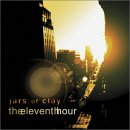
The Eleventh Hour (2002)
This is probably the most straightforward early album of the group. The production is crisp and bright and the songs themselves are a lot less ambiguous in meaning with quite catchy melodies. Woven throughout is evidence of the group’s preference for acoustic instruments (such as banjo), especially on the last half of the albumin songs like “The Edge of Water” and “These Ordinary Days”.
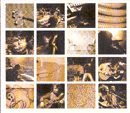
Furthermore – from the studio: from the stage (2003)
This double CD set offers many of the bands past songs in new ways: one disc containing new studio cuts of old songs with new arrangements and the other disc offering live music from the band’s tour. There are also a few new songs included on the album such as the worshipful “The Valley Song”
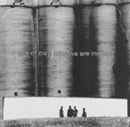
Who We are Instead (2003)
According to the group, this album represents a return to their acoustic roots. It is also a celebration of roots music itself with elements of bluegrass, country, gospel, and blues running throughout almost all the songs on the album. This is especially evident in the surprising “Trouble Is” which sounds like a cranked up version of an O Brother Where Art Thou track. There are some surprisingly soulful special guest duets on “Amazing Grace” and “Jealous Kind” and lots of slide steel guitar use throughout. The album thus has quite a different feel from its immediate predecessors.
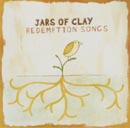
Redemption Songs (2005)
Jars of Clay’s next project followed naturally from their “return to grassroots” album before by turning to Christian traditional songs. In some instances, the group follows the pattern of playing the songs with an updated roots music feel, including some interesting collaboration with the Blind Boys of Alabama. The other aspect of the album is their desire to offer “very old words set to almost completely modern music”, most successfully in the hit “God Will Lift Up Your Head”.
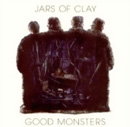
Good Monsters (2006)
I was a bit hesitant when this album was heralded as Jars of Clay’s foray into a full rock album. There is no doubt that much of the style and guitar work throughout the album is something new for the group. Starting with the third track and beyond, however, one can hear much of the trademark acoustic sound of the group woven into the music. While the rock elements do get used to good effect on songs such as the title track, the songs which stand out to me on this album are those like Light Gives Heat that reflect the heart and increasingly publicized social conscience of the group (coinciding with their involvement in African development projects and missions.)
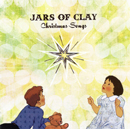
Christmas Songs (2007)
This album replaces the previous Christmas EP as Jars’ much more eclectic and interesting offering of holiday music. Be warned—it’s not a Christmas album that you listen to for a jolly tree-hanging party nor for a worshipful Christmas Eve. The pace of the album drifts back and forth from sleepy to earnest to bouncy fun with some odd instrumentation thrown in for the heck of it. The album is more about style than anything else as it offers an artsy pop take on songs old and new–from Irish melody to Charlie Brown to Paul McCartney!
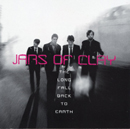
The Long Fall Back to Earth (2009)
This is where the band started to lose my interest. The album Long Fall Back to Earth carries forward the move to a modern electric pop (complete with a moody opening instrumental a la Coldplay’s Vida). With a synthesizer sound throwing back to posh eighties bands, you are hard pressed to find their acoustic roots on the album. It’s a very well-crafted work though it frankly contains the least catchy melodies of anything they have done. Much of the lyrics are about seeking forgiveness to rekindle lost or lacking love but with a sense of mature confidence (“There Might Be a Light”, “Closer”). As on their previous release, they also address social responsibility on songs like “Headphones” (the idea of us actively ignoring the world around us). The hipster vibe started to turn me off.

Jars of Clay presents: The Shelter (2010)
This album is actually a collaborative effort put together by Jars of Clay with numerous contemporary Christian artists. Themed around an old Gaelic saying that we find our shelter in each other, the songs are reflections on faith in community. In the music I hear both a bit of their newer sound (“No Greater Love”) and their older style (“Out of My Hands”). Many of the songs also have a choir-like atmosphere from the use of many voices and influences from the collaborative artists thrown in. My favorite is the obvious presence of Burlap to Cashmere on the very rhythmic “Eyes Wide Open”.
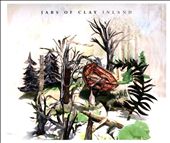
Inland (2013)
This album finds the group firmly planted in what I see as their new “signature sound”—a hazy-voiced electric-washed pop with little melodic variation—a far cry from the multi-layered, acoustic based-songs with catchy tunes and playful harmonies that I’ve previously loved about the group. I thus find the album rather uninteresting to listen to and kind of disappointing.
